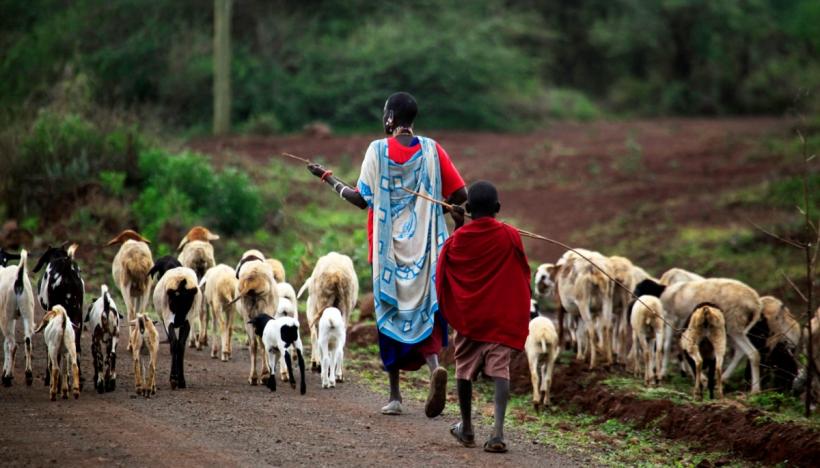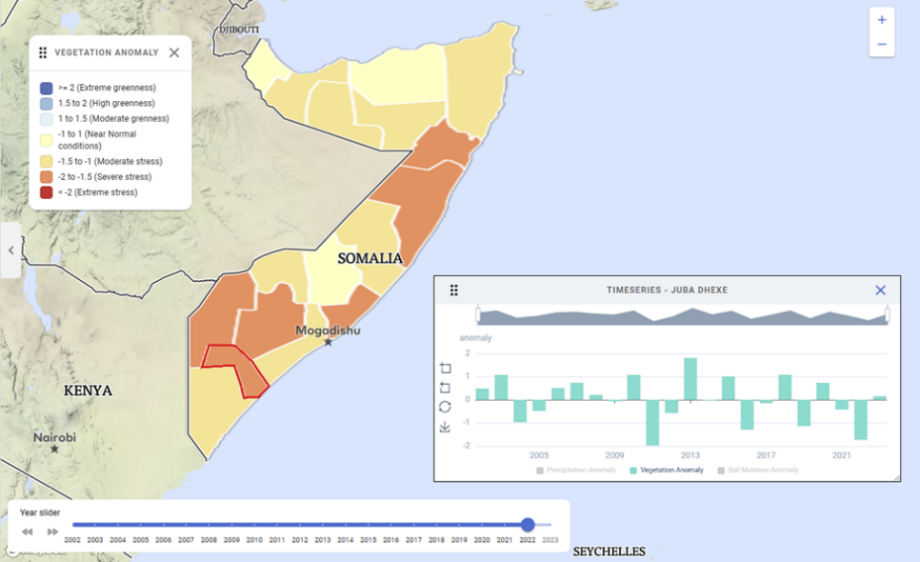From Data to Decisions: Simplifying Complex Drought Risk Analytics with the NextGen Dashboard

Image Courtesy: ZEP-RE
Droughts have a catastrophic impact on the poorest and most vulnerable. They destroy livelihoods, create acute food insecurity, restrict economic growth, and put severe pressure on government budgets. Policies and investments to mitigate and prepare for droughts are crucial, but for the risk which cannot be managed away, a growing array of Disaster Risk Financing and Insurance (DRFI) programs have emerged in response to the needs of climate-vulnerable countries and their populations. These DRFI programs aim to ensure that governments, businesses, communities, and individuals have access to funds – when they are needed - to respond to droughts.
Despite its prevalence and impact, drought remains under-analyzed in global risk analytics. Sophisticated risk models and analytics have been the preserve of high income countries, focusing on perils most relevant for their insurance markets, such as hurricanes impacting on Florida. Drought is a forgotten sibling, for which public policymakers, investors, lenders, and insurers crave useful, transparent data which is often not forthcoming. This undermines trust and quality of drought risk finance products and inhibits policymakers in their decision making.
The Next Generation Drought Index (NextGen) Dashboard promises to address this gap by providing access – to all - to transparent and actionable drought risk data. Led by the World Bank, and financed by the Global Shield Financing Facility (GSFF), this dashboard provides sophisticated risk analytics without the confusing complexity, so they are accessible and practical, helping to design and operate effective risk finance programs. It brings together multiple data sources, including rainfall, soil moisture, and vegetation health, to tell a complete story of drought risk for a chosen geography through an intuitive visual interface. The Dashboard is currently available for the Horn of Africa but other countries will be available soon.
Check out the video about the Dashboard here: Next Generation Drought Index (NextGen) Dashboard
Drought Risk Finance in Action
No countries have a more profound experience of drought than those in the Horn of Africa: Ethiopia, Kenya, and Somalia, where droughts are a persistent threat to livelihoods. When droughts set in, pastoralists’ livestock – which represents their livelihood, nourishment, and wealth - die, leaving households with nothing. Households then become trapped in poverty. The De-risking, Inclusion, and Value Enhancement (DRIVE) project breaks this chain by building pastoralists financial resilience to droughts, through insurance and financial services.
The DRIVE project strengthens the resilience of pastoralist communities in the Horn of Africa (HoA) to climate shocks, particularly droughts. The project, funded by the World Bank and implemented by Zep-Re in partnership with the governments of Kenya, Ethiopia, Somalia, and Djibouti, protects pastoral economies from the effects of drought, increases financial inclusion, and facilitates livestock trade across the region. A cornerstone of the project is an insurance product which pays pastoralists when the availability of pasture (measured by satellites) falls too low. This provides pastoralists with the money they need to prevent their animals from dying – 5 times cheaper than replacing them – making livestock value chains more attractive for investment and ensuring that families and businesses can prosper. To date, the program has exceeded all expectations: 389,000 policies have been provided which protect about 2.2 million people. The project has also mobilized $214 million in private sector investments and paid $6.4 million in insurance claims since its launch in 2022.
DRIVE relies on quality data and analytics to ensure it can meet pastoralists’ needs. Droughts are complex, and the data used to measure them is often not accessible, not comprehensible, or not linked to financial instruments. To make sure that insurance is cost-effective and pays pastoralists when they need it, governments, Zep Re, and the World Bank must understand when and where droughts happen, and what their impacts are. They need this to ensure they are getting the right price from reinsurers; to ensure that the insurance product is designed appropriately and is continuously improved; to understand and communicate when the product is performing well and when it is not; and to make sure they are getting the most suitable environmental data from open-access platforms, and innovative – if opaque - satellite companies.
The NextGen dashboard: a critical tool for Zep Re and the World Bank team
Assessing and understanding the existing insurance product
NextGen has been instrumental in the technical dialogue between Zep Re, the World Bank, and the participating governments. One of the key features of the dashboard is its ability to visualize multiple climate indices—rainfall, soil moisture, and vegetation health—and related payouts through time. Through its intuitive interface, the dashboard allows stakeholders to explore climate data and compare them to real-world conditions on the ground. This transparency has built trust in the insurance product, as stakeholders can scrutinize whether conditions on the ground align with the thresholds set for insurance payouts. For instance, in Somalia, the dashboard helped to explain why insurance thresholds had not been breached in certain regions, and thus why no payment had been made to pastoralists.
Figure: Example NextGen Dashboard visualization for Somalia

Informing product refinement and additional product development
NextGen has helped identify geographic areas that are not suited to existing insurance products, such as regions with a high sensitivity to tiny changes in moisture levels and sparse vegetation. The dashboard is now being used to inform discussions among stakeholders about the need for alternative insurance products, and to explore designs that are better suited to the respective environments. This adaptability has enhanced the overall effectiveness of the DRIVE project, ensuring that insurance products are tailored to the specific needs and challenges of the regions they serve.
Looking to the future: a drought risk dashboard for all
Beyond pastoralists in the Horn of Africa, droughts devastate hundreds of millions of people around the world in many ways: from drought-induced crop failure and food insecurity to restricting financial sector liquidity after shocks, interrupted hydropower generation, or inhibiting investment and access to finance in high-risk areas. Governments, financial and development institutions are increasingly recognizing and looking for solutions to these problems, with new products and programs being thought up and tested. NextGen can play an important supportive role. Consequently, the platform will be scaled up to cover more countries with additional climate data and more advanced insurance-related functionalities. The key to success will be creating partnerships between the World Bank, other technical institutions, and users of the tool.
To learn more, contribute, or share your ideas please get in touch and don’t forget to check out the dashboard!




